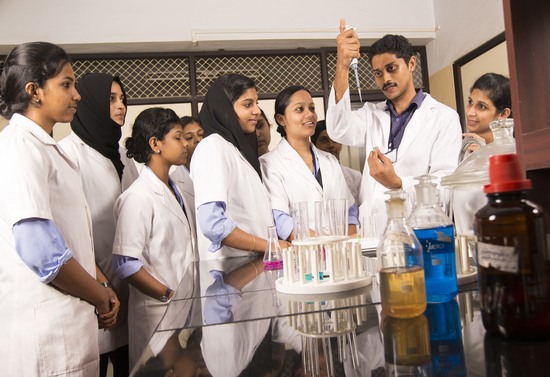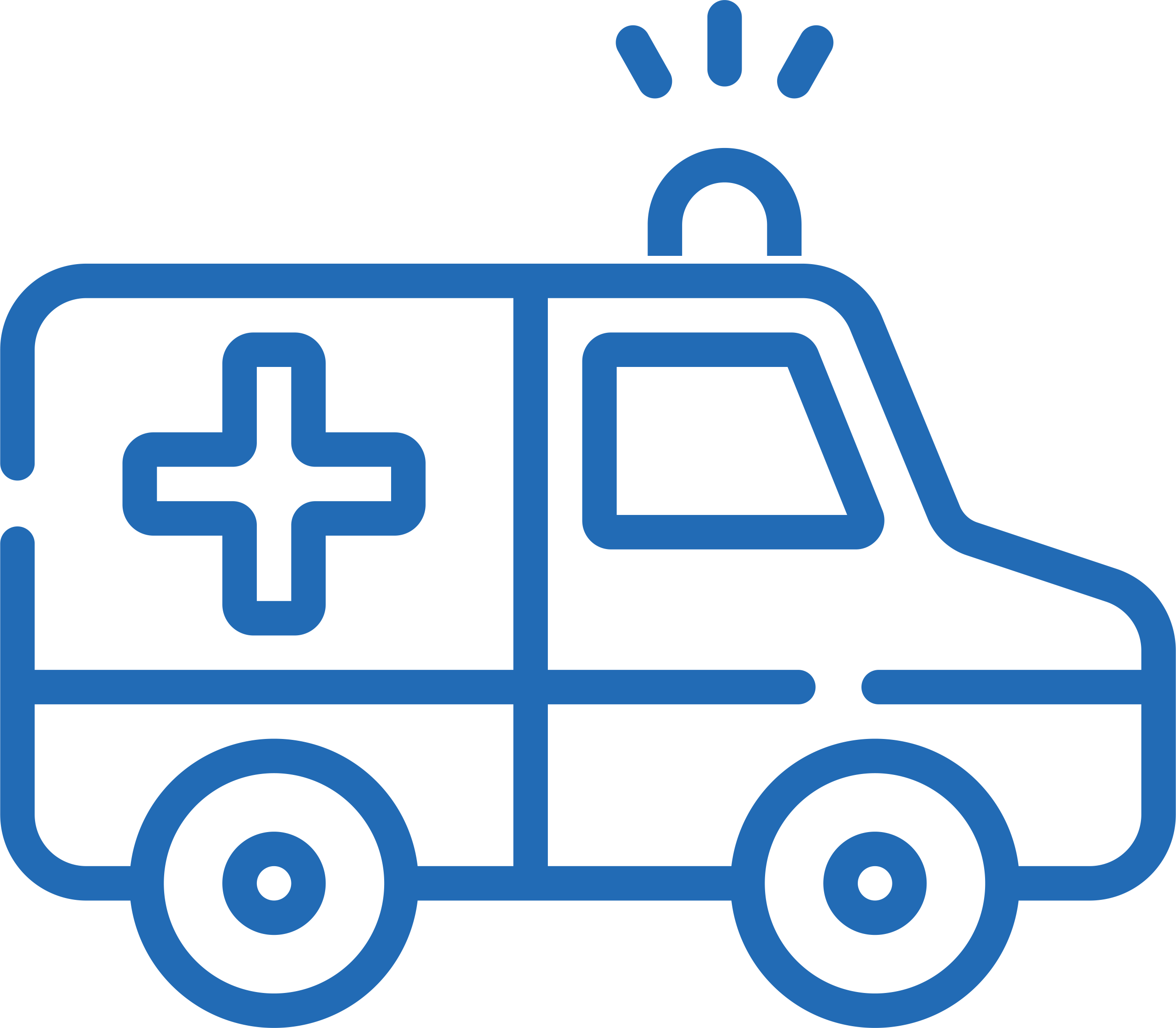Application open for MSc N (Renotification) Apply Now
The third allotment list of nursing courses has been published. B.Sc Nursing, P.B.B.Sc Nursing
Allied Medical Courses: List of Joining and Non-Joining Candidates After Third Allotment Joining Candidates, Not Joining Candidates

College of Allied Medical Sciences
"With qualified faculty, well-equipped laboratories and other facilities, the College of Allied Medical Sciences aims at developing skilled paramedical professionals."
Baby Memorial College of Allied Medical Sciences, commenced in the year 2012. The courses are designed to impart excellent academic input both in theory and practical. Excellent clinical facilities available in BMH, Kozhikode help in ensuring training of world class professionals in the respective fields. The college is affiliated to Kerala University of Health Sciences (KUHS) and approved by Rehabilitation Council of India (RCI) Paramedical Council, Government of Kerala and Atomic Energy Regulatory Board (AERB), Govt. of India.
Degree courses
B.Sc. MLT (Bachelor of Medical Laboratory Technology).
Duration: 4 Years Total Seats: 30
The aim of the course is to teach and train the students in Medical Laboratory Technology. It is mainly a practical oriented course.
Eligibility for admission: +2 (Science) or equivalent course recognized by the Kerala University of Health and Allied Sciences with a minimum of 50% marks in Physics, Chemistry and Biology.
Fees: As per Government norms.
Age Limit: Not less than 17 years
Selection of Students: Strictly on merit as per regulations by the Government of Kerala/Kerala University of Health Sciences.
The students should undergo training for at least two weeks in one or more nationally reputed institutions during the period of the course especially for Virology, Mycology and recent advances in medical technology.
Medium of Instruction: English
BASLP (Bachelor of Audiology and Speech Language Pathology).
Duration: 4 Years Total Seats: 20
The aim of the course is to train the students to undertake the responsibilities of an Audiologist and Speech Language Pathologist, capable of evaluation, diagnosis, treatment, management and rehabilitation of speech, language and hearing disorders. This course is designed with an equal combination of theoretical subjects and hands on practical training and internship.
Eligibility for admission : +2 or equivalent / two years of Pre-University / Pre-Degree examination conducted by the Pre University Board of Education of Government of respective State with a minimum of 50% marks (40% in case of SC/ST candidates) in Physics, Chemistry & Biology / Mathematics / Computer Science / Statistics / Electronics / Psychology.
Age: Not less than 17 years.
Selection of Students: Strictly on merit as per regulations by the Government of Kerala/Kerala University of Health Sciences.
Selection of Students: 50% of seats (including 15% NRI seats) are filled by Management and remaining 50% seats are allotted by LBS as Government Quota.
Duration of the Course: 4 Years
BSc MIT (Bachelor of Medical Imaging Technology)
Duration: 4 Years Total Seats: 20
From the humble beginnings of plain film techniques, we are now with a wide array of imaging methods using X-rays including mammography and Computed Tomography (CT), ultrasonography, Magnetic Resonance Imaging, Radionuclide scan etc.. Modern diagnostic radiography and Medical Imaging forms an integral part of medical practice, both in making diagnosis and also in treatment.
With the advancement of technology and need of understanding various diseases and its treatment, the role of Medical Imaging Technologist in radiological examination & Interventional procedures became inevitable in health care. A qualified Medical Imaging Technologist is skilled in both interventional and Diagnostic Radiology. The purpose of this degree programme is to enable candidate to comprehend the various principles and techniques in diagnostic radiography and to use them in a safe way to the greater benefit of the patient. On graduation the candidate will be eligible to work as a diagnostic radiographer or Medical Imaging Technologist. This course focuses on the innumerable technical procedures for diagnosing various disease processes. The course is designed to meet the new requirements of the health sector, wherein the students are educated and trained in the technical aspects of the procedures, with a special emphasis on the Anatomy and Pathophysiology of the disease process and at times to recognise critical findings. The primary objective of the programme is to provide the necessary understanding, knowledge, attributes and skills required to undertake appropriate diagnostic imaging examinations in a variety of clinical circumstances. This is a professional degree programme with a prescribed commitment to clinical practice. The candidate will develop knowledge of human Anatomy and the way the body works, both in health and disease. As well as becoming a competent diagnostic radiographer and Medical Imaging Technologist, the candidate will learn about the physical, psychological and environmental factors that influence the patient-radiographer interaction. They will also acquire knowledge on machines in Medical Imaging, on working of a radiology department, on interaction with radiologist in an appropriate manner beneficial to the patient, and on technical assistance of procedures done by Radiologists, wherever required. Students gain adequate experience, which includes experience in the areas of Conventional X Ray Imaging and Digital Radiography, Computed Tomography (CT), Magnetic Resonance Imaging (MRI), Nuclear Medicine (NM), Ultrasonography(US), Interventional Radiography (IR), PET Scan, Picture Archival & Communication Systems (PACS) etc. Medical Imaging technology as a profession calls for considerable technological expertise.
The aim of the course is to mould professionally competent Medical Imaging Technologists at the end of the course the successful candidate should be:
- 1. Able to do independently qualitatively good routine radiographic procedures.
- 2. Able to do special investigations under guidance of specialists in diagnostic radiology.
- 3. Able to operate and maintain all equipments used in investigative procedures.
- 4. Able to exercise professional skill and optimisation in all technological aspects of existing and emerging branches of radiological practices.
- 5. Able to use ionising radiation observing all national and international guidelines on radiological safety and accepted protocols in individual cases of the different applications. The technologists will develop a high level of safety consciousness and learn to follow accepted work practices to achieve optimum use of radiation in varied applications.
- 6. Able to assist in the use of ionising and non-ionising radiations for diagnosis and treatment of diseases.
Eligibility for admission: The candidate shall pass higher secondary examination conducted by Board of Higher Secondary Education, Govt. Of Kerala or equivalent course recognized by the Kerala University of Health Sciences with a minimum of 50% marks in physics, Chemistry and Biology taken together.
Age: Not less than 17 years.
Selection of Students: Strictly on merit as per regulations by the Government of Kerala/Kerala University of Health Sciences.
Selection of Students: 50% of seats (including 15% NRI seats) are filled by Management and remaining 50% seats are allotted by LBS as Government Quota.
Medium of Instruction: English
Duration of the Course: 4 years.
Diploma Courses
Duration: 2 Years Total Seats: 15 Nos. each
The aim of the courses is to teach and train the students in various disciplines of paramedical courses.
- 1. DMLT (Diploma in Medical Laboratory Technology) - 2 Years
- 2. DRRT (Diploma in Radiodiagnosis and Radiotherapy Technology) - 3 Years
- 3. DDT (Diploma in Dialysis Technology) - 2 Years
- 4. DOTAT (Diploma in Operation Theatre and Anaesthesia Technology) - 2.5 Years
Eligibility for admission: Candidates who have passed Higher Secondary examination of the Board of Higher Secondary Education, Kerala, or examinations recognized equivalent thereto, with 40% marks in Physics, Chemistry and Biology put together, are eligible. Relaxation of 5% marks will be allowed for SC/ST candidates.
Age: Not less than 17 years.
Selection of Students: Strictly on merit as per direction of the Government of Kerala
Medium of Instruction: English
Commencement of Admission and issue of application form:
Application forms are usually issued during the month of May/June every year. Classes are scheduled to commence in the month of October. Details will be published on the website and in leading newspapers during May/June every year.

